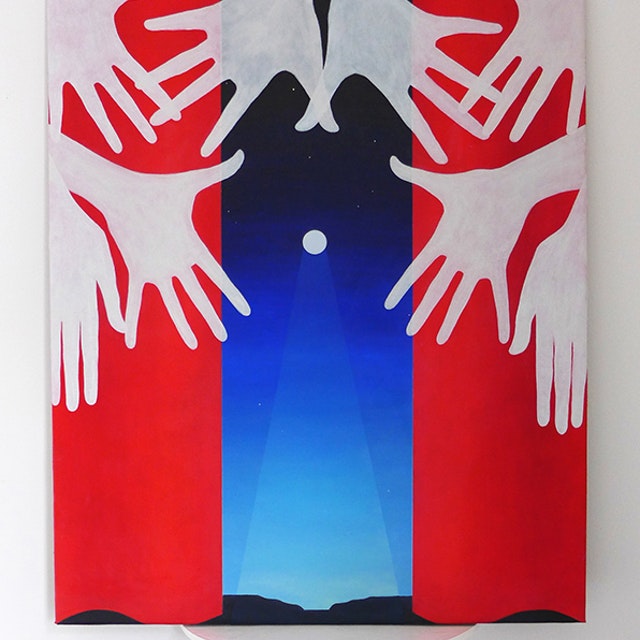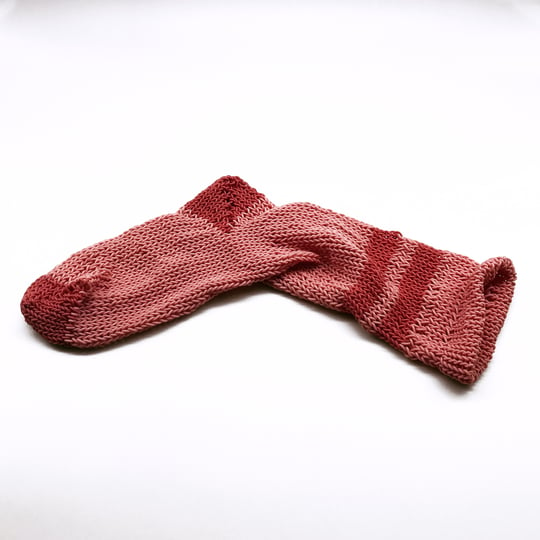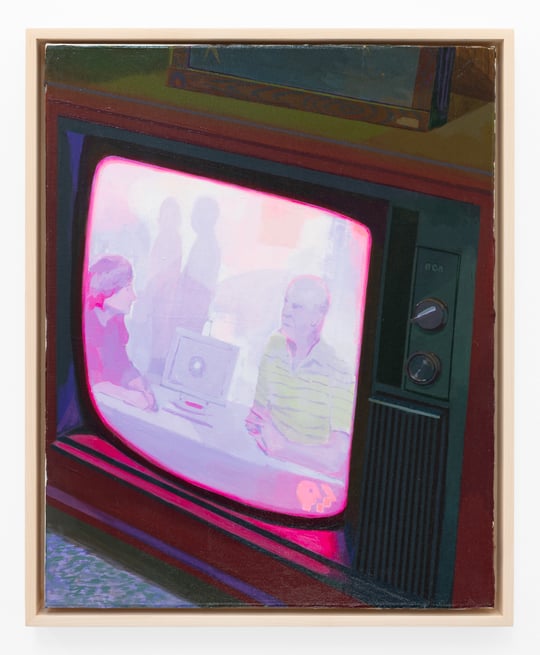
The folksy and fantastical group exhibition Fable at David Lusk Gallery in Nashville gathers a roster of artists offering varied interpretations of the lessons found in a thrift store copy of Aesop’s Famous Tales. While we think of them as children’s stories in the twenty-first century, these ancient tales were originally aimed at adults. Aesop’s stories are packed with animal characters, and Fable is similarly populated by a magical menagerie of cats, birds, lions, and snakes. Terry Lynn’s Brer responds to Aesop’s lessons with a reference to the more modern—and strikingly more Southern—trickster tales attributed to Uncle Remus. Lynn’s large painted collage pictures a man in a rabbit head mask surrounded by a bunch of bunnies. In Leslie Holt’s paintings Slow and Steady and Fast and Foolish, “The Tortoise and the Hare” is illustrated in a diptych. Like shadow puppets, embroidered details give shape to gesturing hands that appear to cast the black-threaded shadows of the titular racers against overlapping fields of color.

Huger Foote’s quartet of photographs is one of the exhibition’s more abstract and elusive offerings. Foote’s collection includes images of a gas pump hose, a yellow stake sticking out of the ground, a street corner, and a bunch of bursting blossoms alongside the curb of a parking lot. The artist’s choice to leave these works untitled offers no help for understanding how these they speak to Aesop’s fables. That said, the tangling of Foote’s gas pump hose is decidedly serpentine, and Aesop’s stories about “The Farmer and the Snake” and “The Farmer and the Viper” warned readers (and listeners) against mending a betrayed friendship or cozying-up to evil. The whole suite supports this interpretation: the stake marks the line crossed by betrayal, the street corner demonstrates where the friendship took a turn, and the flowers blooming in a parking lot represent the friendship that might have been. Regardless of the interpretations they may suggest, Foote’s images are among the most striking in the exhibition, possessing the kind of iconic quality that defines Aesop’s archetypical characters.
Emily Weiner’s banner-like, symbol-laden paintings offer yet another kind of iconography. Her bold use of color and simple shapes is evocatively graphic, with elements such as lunar motifs, gesturing hands, and red curtains lending these works a ritualistic aspect. The addition of sculptural frames and small shelves makes these works almost appear as contemplative tools for spiritual purposes, but the splayed hands and open curtains suggest a zany vaudeville slant. Weiner’s paintings are subtle reminders that Aesop’s ethical lessons—as well as today’s ideological moralizers—rely on entertainment and sleight-of-hand to persuade audiences.

All three of Weiner’s works in Fable include dramatic representations of the moon in its various changing states, reflecting Aesop’s account of “The Moon and Her Mother.” This fable finds the Moon asking her mother to make her a fitted cloak. The Moon’s mother protests, pointing out that the Moon’s changing shape makes the garment impossible. In a sense, each artwork in Fable negotiates a similar challenge: crafting a legible image to contain stories that continue to change and recycle themselves across continents and millennia.
Fable is scheduled to be on view at David Lusk Gallery in Nashville through April 4. Due to increased public health precautions in light of the COVID-19 outbreak, please contact the gallery to inquire about making an appointment to view the exhibition.




